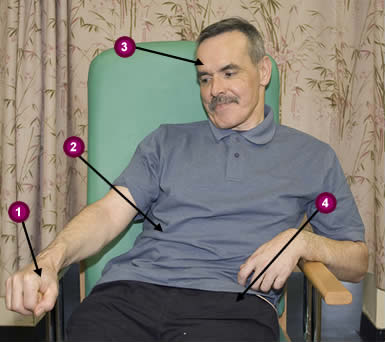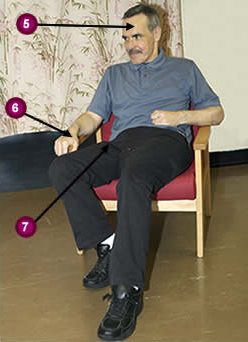Compensations commonly develop when hemiplegia is associated with visuo-spatial inattention and when patients are unaware of their hemiparesis. Patients may generate excess activity in the non-affected side initially through a fear of falling, usually to the side that they perceive most easily, i.e. the unaffected side. This may result in the commonly seen “out of line/pusher syndrome” which is characterised by overuse through pulling or pushing movements or inappropriate balance/righting reactions. Movements and postures that we find difficult to rationalise may be perceived as entirely normal by the patient.
Pusher syndrome may be simply alleviated by providing adequate support and guidance on the unaffected side. Care must be taken in the rehabilitation of patients where muscle tone and alignment may be adversely affected by compensatory activity, although it may have to be accepted and modified in certain circumstances where a degree of compromise is unavoidable in achieving functional goals.


- Pushing towards affected side with arm
- Trunk side-flexed towards un-affected side
- Head side-flexed towards un-affected side
- “Pressure-bearing” rather than actively weight-bearing through affected hip
- Head rotated to right
- Pulling to right with arm
- Weight distributed on right hip
Management plan- To reduce and control compensation strategies by:
- Using base of support and positioning strategies to manage the unaffected upper limb (as well as the hemiplegic side)
- Making appropriate functional demands to the level of recovery so as to prevent the need for compensations
- Explaining to the patient the rationale for these management strategies to maximise compliance
- Discussing management strategies with MDT to ensure a coordinated and consistent approach
Page last reviewed: 01 Feb 2021


